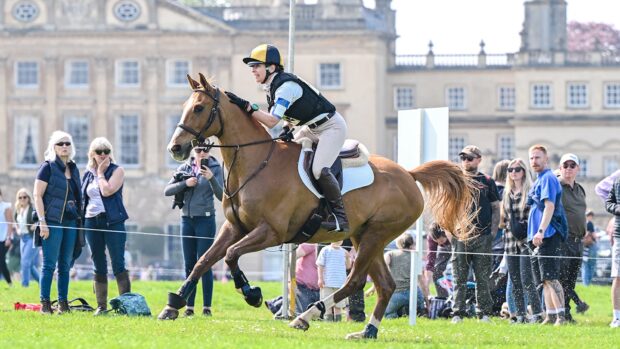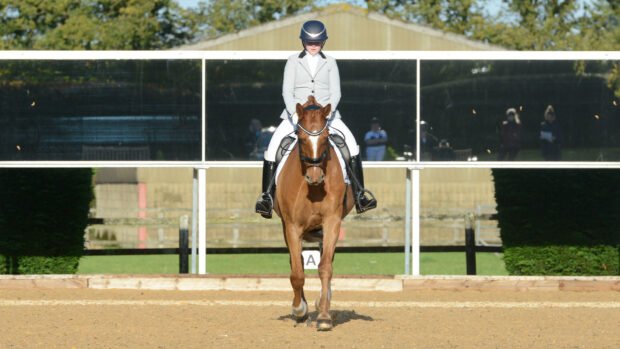A CAP on dressage penalties could make eventing safer – as findings from one of the sport’s biggest ever studies identifies 16 risk factors for cross-country horse falls.
The study, “Towards a safer sport: risk factors for cross-country horse falls at British Eventing competition”, was carried out by researchers from the University of Central Lancashire and the University of Nottingham Trent, with funding from Myerscough College.
The aim was to determine risk factors associated with horse falls by analysing data from 749,534 British Eventing (BE) cross-country starts from 1 January 2005 to 31 December 2015. Of these starts, 2,633 horse falls were recorded, 3.5 falls per 1,000 starts and 16 risk factors were identified.
The findings included that male riders were associated with a greater odds of a fall than females, and older riders were less likely to have a fall than younger ones. Horses who started in the previous 15 to 21 days were less likely to fall than horses whose last start had been in the previous one to 14 days, and the risk of horse falls increased through higher levels of competition. Mares were more likely to have a fall than geldings, and ponies more likely to fall than horses between 15.3hh and 16.2hh.
Lead researcher Heather Cameron-Whytock, who has evented, told H&H the more “statistically significant” risk factor identified was the level of competition.
“This means it had the most profound effect on risk of falling. We know the jumps get bigger and more technical, they have to be going faster and the courses are longer, so it’s a matter of fact the higher levels are more challenging, so we would expect to see a higher risk of falls there,” she said.
“Our general recommendation on this is that minimum eligibility requirements (MERs) need to be carefully monitored and reviewed, which we know they are as they change regularly.”
It was also identified that combinations that scored a higher number of penalties in dressage were more likely to have a horse fall than those who scored a lower number. Based on this, the researchers suggested introducing a penalty cap to eliminate combinations who score 70 or more in the dressage.
“We found for every 10 additional dressage penalties, the risk of falls increased,” said Dr Cameron-Whytock. “When we explored this further, we saw that combinations that get 70 or more penalties are almost four times more likely to have a fall than combinations that score less than 70.
“Introducing a cap could be beneficial. Although it’s very rare to score 70 or more, it does happen and it’s in the data. These individuals are so much more at risk, so it’s worth trying to do something about that.”
Dr Cameron-Whytock added that it is unlikely to ever find “one thing” that will eliminate falls, but it is about making the sport safer where possible.
“If we can keep finding 1% reductions, that could be one rider not paralysed, or not sustaining a serious injury, and surely that makes it worth it,” she said.
BE national safety officer and technical adviser Jonathan Clissold has worked with Dr Cameron-Whytock on other eventing safety projects, and told H&H that this study comes up with “a lot of very interesting points” that support and justify the MERs in place.
“After comparing with the most recent data, BE will consider compulsory retirement for dressage penalties of 70 or more. The dressage requirement to gain an MER has been reduced this year from 50 penalty marks to 45,” he said.
Mr Clissold added that further analysis of the number of runs and the period between these “could be interesting”.
“The introduction of ‘continuing performance requirements’ since this data set has gone a long way to help address the points raised in this paper about poor performance increasing the risk of a fall,” he said.
BE chief executive Helen West told H&H she found the study “fascinating and extremely informative”.
“It is so good to be able to validate ‘gut instinct’ with solid, scientific findings,” she said. “The findings around gender and age affecting self-efficacy were striking and this highlights one of the extraordinary aspects of our sport, whereby we see riders continuing to participate at top-level into advanced age, even at professional level.
“There is no doubt that older event riders harness extensive experience that equips them with well-developed coping mechanisms and makes them less susceptible to external pressures and expectations placed upon them, enabling them to focus their performance and skill to completing the cross-country accurately and safely.”
Ms West added that the finding – that riders who had a fall during their previous start were more likely to fall again – supports findings from the “extensive work” equestrian data analysts EquiRatings has done with BE.
“This likely indicates that these individuals were competing at a level above their skill and therefore were at a heightened risk. This further highlights the importance of continually reviewing MERs,” she said.
“It is my belief that additional research is needed to enable further recommendations to be made in relation to MERs and their effectiveness for maximising safety, especially at the elite end of the sport. This is something that BE is continually monitoring as part of our risk-management strategy.”
You might also be interested in:

Eventing risk profiles could help reduce cross-country falls

Rotational falls in eventing at all-time low – but more work ‘still to do’

Risk profiles for cross-country courses could be on the cards thanks to new research

Subscribe to Horse & Hound magazine today – and enjoy unlimited website access all year round
Horse & Hound magazine, out every Thursday, is packed with all the latest news and reports, as well as interviews, specials, nostalgia, vet and training advice. Find how you can enjoy the magazine delivered to your door every week, plus options to upgrade your subscription to access our online service that brings you breaking news and reports as well as other benefits.




